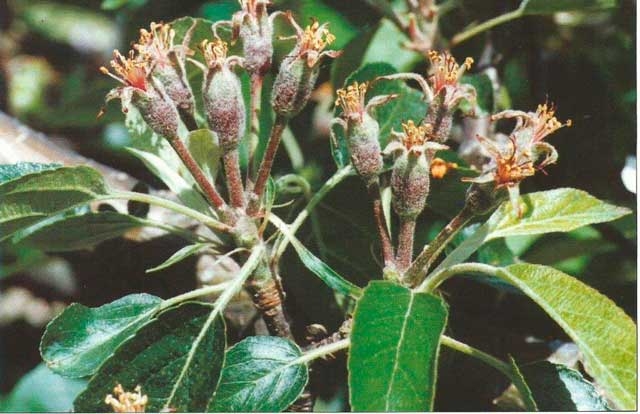Spur leaves are very important for fruit set and early fruit development.
Some of the carbohydrates that the new flowers and young developing fruit need, come from the reserves stored in bark and roots.
However, the majority of carbohydrates come from the new spur leaves by way of photosynthesis, which occurs during spring.
If these leaves are removed, damaged by spray burn or insects, or shaded, the developing fruits become starved, resulting in poor fruit set or small fruit at harvest.
Spur leaves are also supplying the young fruits with calcium, which is critical for fruit quality. Calcium is closely associated with several physiological disorders, such as water core, cork spot and bitter pit.
Spur age and quality
As spurs age, they develop more and more individual spurs or growing points, but the translocation system supplying these growing points increases very little. Thus, significant competition exists between the growing points for nutrients and carbohydrates.
As a result, the number and size of spur leaves decrease. So does bud development on the spur.
Spur age also affects fruit quality which tends to decrease on spurs older than four years.
High spur quality is the basis of productive trees. High quality spurs develop and remain in trees with less structural wood and more bearing wood favouring optimum light distribution.
Branchless trees are a good example, where you can maintain high spur quality. Using methods, such as spur pruning and spur extinction, the spurs will get more of the translocated nutrients and carbohydrates, conditions of sunlight improve, and the leaf area and efficiency of each spur increase.
Shoots and shoot leaves
Spur leaves are not the only leaves apples need for growth.
Spur leaves age after 60 to 90 days and their capacity to photosynthesise declines.
Each day an apple grows, it requires additional carbohydrates for cell development and sugar. Spur leaves cannot keep up with the demand of carbohydrates for fruit growth.
In early summer, shoots and bourse shoots stop growing because they can no longer compete with the nearby apples for carbohydrates.
(cont next month)
See this article in Tree Fruit Oct 2018






















